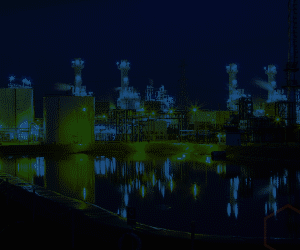The third International Conference on Film Forming Substances (FFS2019), chaired by Barry Dooley of Structural Integrity Associates Inc, provided a highly interactive forum for the presentation of new information and technology related to FFS, research results, case studies of powerplant and industrial applications, and open discussion among users, equipment and chemical suppliers, researchers, and industry consultants.
The meeting attracted more than 70 participants from 22 countries to Heidelberg, Germany, March 19-21. Organizers were BHT GmbH and PPChem AG, publisher of PowerPlant Chemistry. Fineamine SA and Anodamine Inc provided financial support. The FFS conferences are supported by the International Association for the Properties of Water and Steam (IAPWS).
A highlight of the meeting was a panel session that focused on key questions and uncertainties regarding the applications of FFS and results in their use. Dooley provided the notes below from that exchange among participants:
-
- Feedback from the first two conferences had indicated confusion about the various terminologies used in discussions on this relatively new field of chemistry, so IAPWS introduced the term Film Forming Substances. [link to ccj-online.com/film-forming-substances-ffs-the-next-frontier-in-cycle-chemistry] Two subsets describe these substances in terms of them either being amine-based (FFA, Film Forming Amine and FFAP, Film Forming Amine Product) or non-amine-based (FFP, Film Forming Products). FFS is the terminology and acronym now used worldwide.
- Several times during the discussion, attendees recognized the value of the IAPWS Technical Guidance Document on FFS (TGD8-18), published in 2016. IAPWS will introduce a new TGD on FFS for industrial plants later this year and will publish a white paper on the application of FFS for nuclear plants.
- International updates were presented on recent experiences from powerplants of all types and from industrial plants. Participants indicated that problems experienced at fossil and combined-cycle plants after application of FFS most often relate to increased deposition on heat-transfer surfaces which result in under-deposit corrosion. Common aspects discussed: (1) There had been no consideration given to pre-application review of the plant or its chemistry as suggested in Section 8 of TGD8-18. (2) There was no understanding why a polyacrylate addition was included in the proprietary FFAP.
- Nuclear plants were a bright spot in the discussion. FFS experience continues to be good with ODA being the FFA of choice. There was low impact on the chemistry control with complete observation of hydrophobic films in the feedwater and condensate systems. However, film formation in dry-steam areas remains a question.
- Experience in fossil and combined-cycle plants continues to be variable in terms of corrosion-product transport and film formation in steam circuits. Suggestions were made to improve the verification process using tube samples and corrosion-product monitoring during startups.
- Updates were provided on ongoing research activities from different international organizations dealing with decomposition of FFA, thermolysis and distribution of FFA, measuring/quantifying the concentration of FFS in the water, adsorption kinetics of film formation, and the effects of flow-accelerated corrosion.
- Another discussion thread: Open issues related to inspection aspects following application of FFS to a plant, and the methods of determining hydrophobic films on surfaces, especially steam surfaces, and whether their presence can be related directly to corrosion protection.
- Little new work was presented on understanding the mechanism of the interaction of FFS with surface oxides and on how an FFS film might change the growth mechanism and morphology, and result in reduced levels of corrosion-product transfer. This relates to the interaction of the FFS film with existing oxide/deposit surfaces in condensate/feedwater and in boiler/evaporator water. Much discussion took place on the oxides which form in steam circuits, and on the chromia oxides which form in the phase transition zone of the steam turbine.
- One of the continuing conclusions from FFS2019 was the need to first optimize the current chemistry of a plant with verification, or through baseline monitoring, before application of any FFS.
- There were extensive discussions regarding gaps of knowledge and needs for further research work. IAPWS will define, via one of the organization’s Certified Research Need documents, the work needed on the interactions occurring under all plant conditions and temperature ranges.
To sum up, there still much to learn and a lot of fundamental work that must be done to understand the mechanisms at play with FFS—including film-formation kinetics, equilibrium and stability, film structure (for example, thickness or number of layers), how the adsorption is affected by other amines, and the correspondence to the reduction in corrosion rate through understanding of the interactions with oxides and deposits.
If you can’t get to the next FFS meeting, likely in France in 1Q/2020, attend the upcoming HRSG Forum with Bob Anderson, July 22-24, at the Hilton Orlando. Dooley (bdooley@iapws.org) will bring you up to date on the powerplant chemistry required to protect your equipment.








